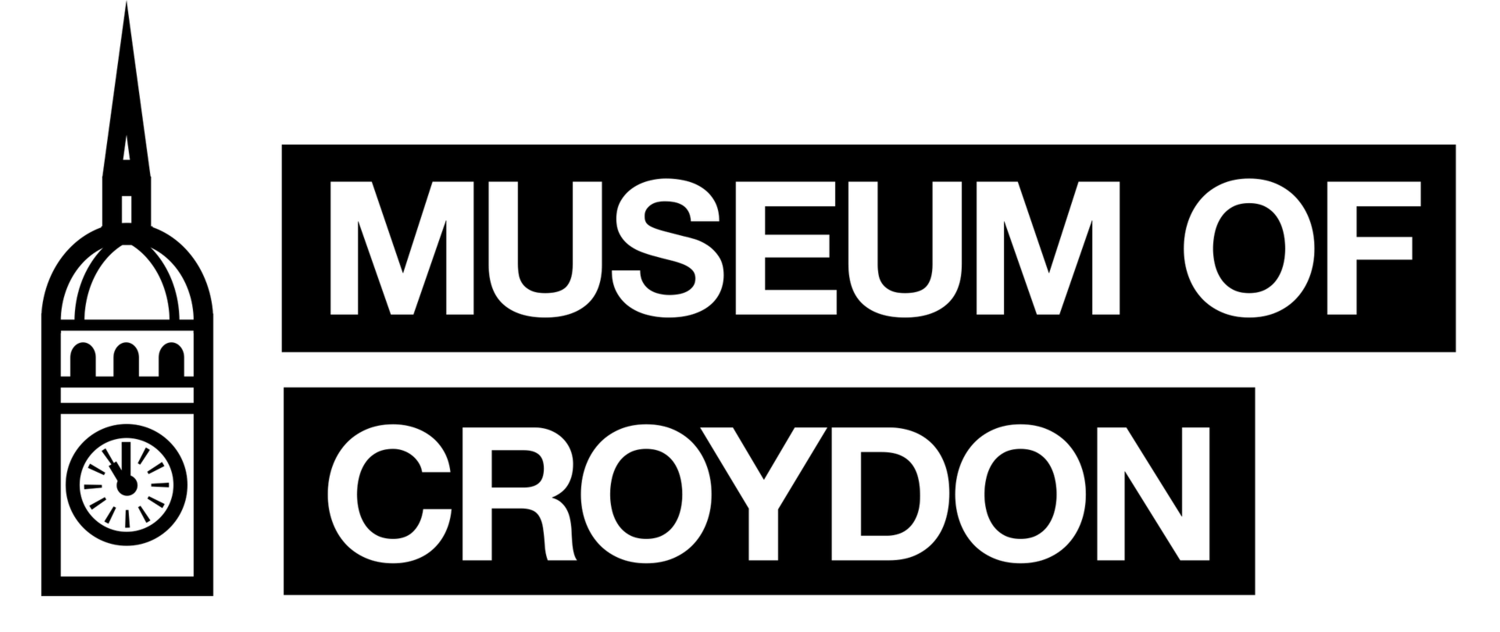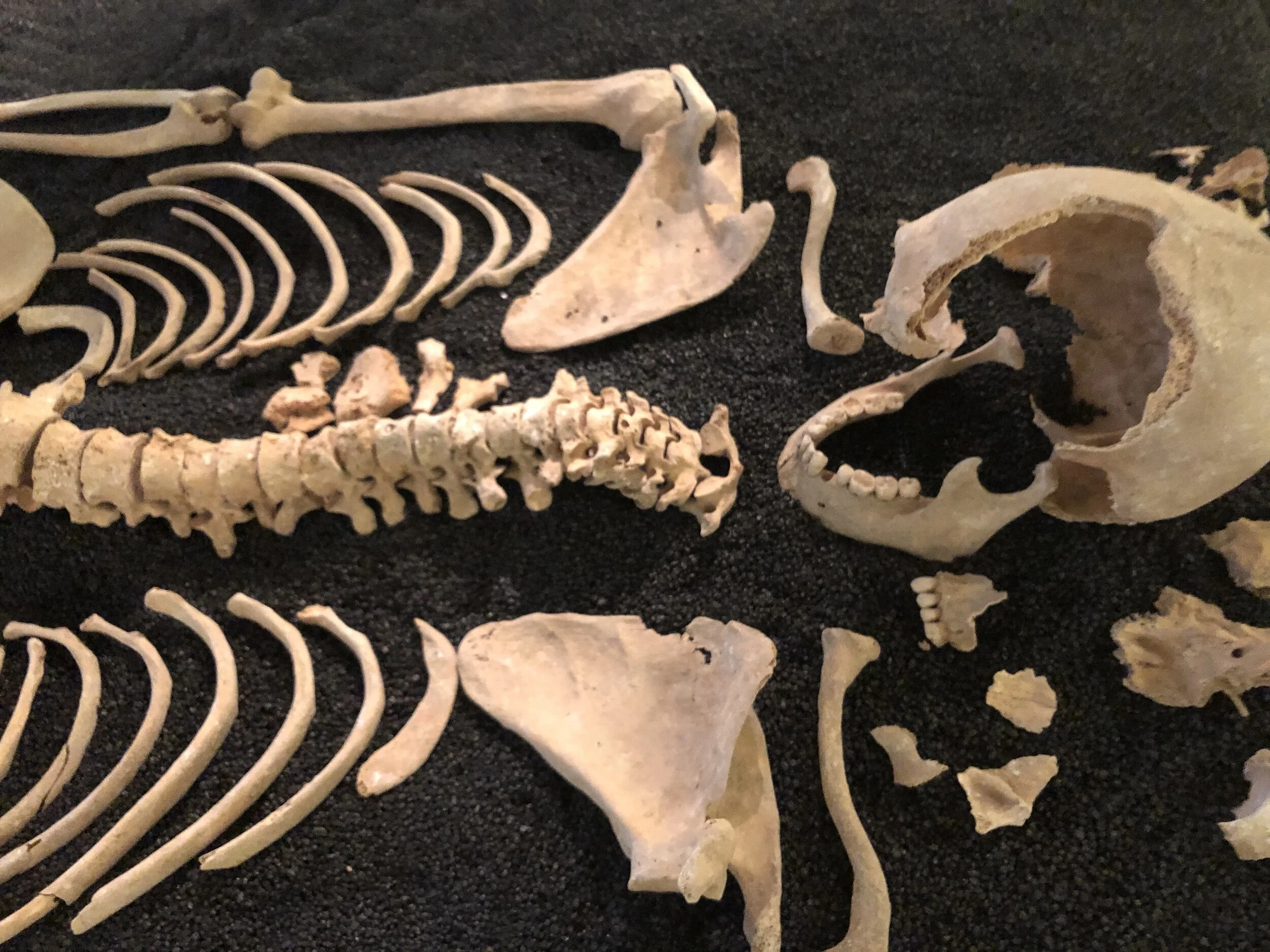
Croydon’s Anglo-Saxons
Archaeological Explorers Activity Pack
Who were the Anglo-Saxons?
The Anglo-Saxons were a group of people who came to England by boat from Germany, Denmark and the Netherlands. The Anglo-Saxons lived here from around 410 AD to 1066 AD – over 600 years!
There were many tribes who came to England but the three main ones were, the Angles, the Saxons and the Jutes. These three large groups were often at war with each other as well as the Britons, the people who were living in England before the Anglo-Saxons arrived.
The map below shows where the Angles, the Saxons and the Jutes came from and where they settled. The Anglo-Saxons named many places in England, including Essex, Sussex, Kent and East Anglia. Some even say that the country was named after the Anglo-Saxons – ‘Angle-land’, which we now know as England.
Did you know Anglo-Saxons lived in Croydon?
Under your feet in Croydon, many things have been found that tell us that Anglo-Saxons lived here long ago (1,200 years ago actually!). Archaeologists have found jewellery, pots, swords, knives, buckets, tools and many more things when they dug in these places. Three places where lots of objects were found are Lion Green Road, Riddlesdown Road and Park Lane/Edridge Road.
Croydon may even have got its name from the Anglo-Saxons. Some historians have suggested that it has come from ‘Croh denu’ which meant ‘crocus valley’ in the Anglo-Saxon language.
The Oldest Croydonian!
Imagine digging in your garden at home and finding an Anglo-Saxon skeleton - that’s exactly what happened to a family on Riddlesdown Road in Croydon! The bones that the family found were sent all the way to a scientific lab in America to find out their age. Turns out the skeleton was from 670-775 AD – over 1200 years old! Croydon’s Anglo-Saxon now lives at the Museum of Croydon.
Did you know?
A person’s skeleton is a unique record of their life, capturing information about their health, diet and social status. This Anglo-Saxon person had evidence of healed rickets, which Dr. Rebecca Redfern, Curator of Human Osteology at Museum of London tells us this is the first case of residual rickets seen from this period. Rickets is a condition that affects bone development in children and is usually due to a lack of Vitamin D and/or Calcium. This tells us a great deal about this Anglo-Saxon’s childhood health.
Want to know more about evidence “written” into bones, click here.
Activities
Connect the body parts of the skeleton using scissors and push pins. Use the colours for helpful hints and enjoy making your skeleton move.
Challenge yourself to identify different parts of the skeleton – don’t worry, there are some handy hints to help!
What is Archaeology?
Archaeology (ark-ee-ol-uh-gee) is the study of people and objects from the past. Buried under the ground, objects have been discovered from a long time ago which help us to learn about how people used to live. Archaeologists have found all sorts of objects; from swords to pots, coins to bones!
What do archaeologists do?
An archaeologist (ark-ee-ol-uh-jist) is like a detective. They help to find long lost objects, study them and look for clues to tell us stories about the past. Sometimes archaeologists only find pieces of an object and so they have to use their imagination to fill in the gaps – like a jigsaw puzzle. Archaeologists are also able to use science to find out the age and what material the artefacts are made from.
Did you know?
There are 30 sites across Croydon that have been identified as Archaeological Priority Areas by Historic England. These sites are places of significant archaeological interest where new discoveries could be made. Croham Hurst Round Barrow, Riddlesdown Road and Farthing Down are viewed as some of the highest priority sites in the area.
Read the full Croydon report of Archaeological Priority Areas by Historic England here.
Activities
Learn how archaeologists identify an artefact’s age using the different layers of the earth below our feet.
A hands on activity where you can take on the role of an archaeologist and make your own dig site. Learn how objects can degrade and decay over time.
Anglo-Saxons at the Museum
Over the past hundred years and more, evidence of Croydon's Anglo-Saxon history has been discovered from several Anglo-Saxon burial sites, some of which is preserved at the Museum of Croydon.
The Museum has a fantastic collection of Anglo-Saxon artefacts including bones, pots, swords, jewellery, glassware, sewing equipment and even buckets! These objects can tell us so much about what the Anglo-Saxons’ lives were like, what they wore, their burial traditions and so much more!
With potential future excavation and research at these sites more Anglo-Saxon history in Croydon could still be uncovered...
Did you know?
Glass archaeology finds, like this beaker, are rarely found in such good condition. The condition can be dependent on its burial environment and the composition/materials of the glass. Water is a main factor in deterioration as the wet earth can cause decay. Glass deterioration can speed up when first removed from the ground due to drying out, so immediate conservation treatment is needed. Sometimes it’s necessary to remove buried artefacts with the surrounding earth to preserve it longer before treatment.
Activities
Learn how archaeologists investigate objects from the past using real items from the Museum of Croydon’s Anglo-Saxon collection.
Link together the broken pieces to re-create a beautiful pot in this problem-solving jigsaw activity.
We hope you have enjoyed our family learning ‘Archaeological Explorers Activity Pack’ you can find the answers to the activities here:
We welcome any feedback you have for our brand new digital learning offer! Let us know what you enjoy and tell us of any accessibility needs, ideas or concerns you have by emailing us at museum@croydon.gov.uk




